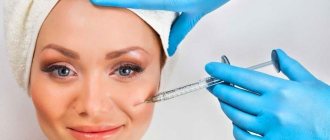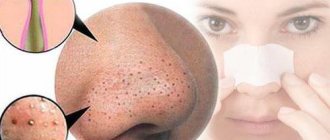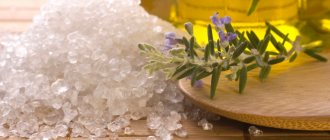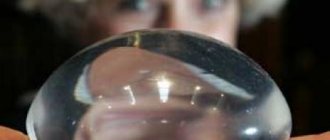Contraindications for plasma lifting are present along with the advantages of the procedure. For any anti-aging procedures, there are certain prohibitions; all these aspects must be taken into account by a specialist who will perform skin rejuvenation in this way.
- Areas of application of plasma lifting
- Advantages and disadvantages of the procedure
- Possible contraindications to plasma lifting
- Possible complications and side effects
If we talk about plasma lifting, it is the process of administering injections directly under the skin, which consist of the patient’s own blood plasma. Scientists have been able to prove that platelets contained in plasma have a beneficial effect on the condition of human skin and tissues. Increasing their level in certain areas contributes to a more intense production of vitamins, collagen and other components responsible for cell renewal, which allows you to restore the skin in the shortest possible time. This procedure is one of the non-surgical methods of rejuvenation.
Areas of application of plasma lifting
Plasmolifting is very actively used in many countries to eliminate the following problems:
- initial signs of aging of the skin on the face and body;
- dry skin, flaking, increased blood flow and associated deficiencies;
- the initial stage of drooping eyelids;
- development of the inflammatory process in the sebaceous glands;
- acne;
- stretch marks on the skin after sudden weight loss or childbirth;
- the presence of skin defects, including scars;
- baldness and development of seborrhea;
- skin restoration after laser or chemical peeling.
In addition to cosmetology, plasma lifting is also actively used in orthopedics for the treatment of arthrosis, osteochondrosis, sports injuries, and to eliminate pain and muscle spasms. In gynecology, indications for the procedure include erosion and other diseases of the cervix, endocervicitis. Dentists very actively use this method in the treatment of gum inflammation, tooth extraction, development of the inflammatory process in the gums and implantation. The maximum cosmetic effect can be obtained if an integrated approach is applied, in which a specialist will combine plasma lifting, for example, with biorevitalization.
Cosmetologists have a positive attitude towards plasma lifting, considering such manipulation harmless. In their opinion, this procedure makes it possible to free up the body's existing resources. In this way, it is possible to activate the regenerative, immune and metabolic systems of the patient’s body.
Before the procedure, the patient must consult with a doctor or cosmetologist who will do this. The specialist will conduct a preliminary examination of the skin, take a medical history and prescribe the necessary tests. This stage is very important, since the doctor will first be able to take into account possible complications and prevent them.
In addition to being examined by a doctor and undergoing tests, the patient needs to exclude strong coffee and tea, smoked, spicy and spicy foods, salty, sour and fried foods, and alcoholic beverages from the diet several days before the expected date of the procedure.
During this entire time, you should consume drinking water or herbal teas as much as possible, give up tobacco products, and also make sure that your last meal is 4-5 hours before the procedure. It is necessary to take into account that for women it is better to choose the date of plasma lifting in the first phase of the menstrual cycle, after the bleeding has stopped.
We recommend reading:
- Plasmolifting and orthoplasma
- Plasmolifting of the hip joint
- Plasmolifting of the shoulder joint
- Treatment of joints with blood plasma
- Autoplasmotherapy of joints
- Plasmolifting for immunity
- Plasmolifting in orthopedics and traumatology
- Plasmolifting in the treatment of the spine
- At what age is plasma lifting performed?
- Plasmolifting for the treatment of joints
- Plasmolifting method of treatment and rejuvenation
- Plasmolifting of the knee joint
- Plasmolifting: how many procedures are needed
- Why is plasma lifting done?
- Plasmolifting legs
- Recommendations before the plasma lifting procedure
- Plasmolifting for arthrosis
- Plasmolifting for coxarthrosis
- Plasma therapy
- Plasmolifting restrictions
- Plasmolifting for cellulite
- Plasmolifting of the shoulder joint
- Pros and cons of plasma lifting
- Plasmolifting for arthritis
- Treatment of hernia with plasma
- Plasmolifting for injuries and fractures
- Plasmolifting for osteochondrosis
- Plasma therapy and plasmolifting
- Plasmolifting how much does 1 procedure cost?
- Plasmolifting preparation for the procedure
- Plasmolifting of the hip joint
- Plasmolifting with hyaluronic acid
- Plasma therapy for the treatment of joints
- What to combine plasma lifting with?
- Swiss plasma lifting
- Plasmolifting prgf
- Frequently asked questions about plasma lifting
More articles →
- Comments
Loading comments...
Advantages and disadvantages of the procedure
Plasmolifting is a relatively new type of therapy, so experts express conflicting points of view, highlighting its advantages and disadvantages.
Thus, the advantages of this procedure include:
- safety;
- tangible effect;
- no likelihood of developing an allergic reaction;
- few side effects.
Disadvantages of plasma lifting:
- High cost of the procedure. To perform such a procedure, a specialist will need expensive equipment, and the work of a highly qualified cosmetologist will cost more.
- The procedure is painful.
- Many contraindications.
Procedure
For such manipulation to be more effective, preliminary preparation is needed.
- The doctor finds out if there are any contraindications to this course.
- Prescribes blood tests and other studies.
- The patient himself, 3-4 days before the sessions, should not drink alcohol, medications that affect blood clotting, or heavy fatty foods.
- Then blood is taken from a vein from 20 to 100 ml into a special tube with an anticoagulant and a gel for separating the blood.
- The tube is placed in a centrifuge to separate the plasma.
- The areas of skin where the biofluid will be injected are anesthetized with a special agent.
- The resulting plasma is injected into the tissues where recovery needs to be started.
Possible contraindications to plasma lifting
Possible contraindications for hair plasma lifting:
- If hair plasma therapy is planned, the patient must undergo appropriate laboratory tests before the procedure. If the results obtained do not meet the standards, the procedure will be postponed.
- The procedure will be canceled if the hair problem is caused by any hormonal imbalance. In this situation, the doctor can prescribe complex therapy to the patient, which will reduce hair fragility and loss.
- However, the procedure is not recommended if you have nervous disorders or fears of injection.
With a procedure such as facial plasmolifting, contraindications may be related to the presence of autoimmune diseases.
Any specialist will refuse to perform the procedure if a woman consults a cosmetologist during menstruation. There are no categorical contraindications to plasma lifting on the days when a new menstrual cycle begins, however, the properties of plasma cells depend on the hormonal status and state of the woman’s immune system, which is directly related to the menstrual cycle. During menstruation, the platelet content in the blood decreases significantly, which significantly reduces the therapeutic effect of such an expensive procedure.
Surely many women will be interested in whether it is possible to do plasma lifting during pregnancy. Pregnancy and breastfeeding are direct contraindications for this type of exposure. This is due to the fact that during this period blood clotting is impaired and various kinds of hormonal disorders may occur. You can return to the issue of restoring body elasticity after breastfeeding ends.
There is no possibility of using plasma lifting in the presence of diseases of the liver, kidneys and cardiovascular system in a chronic form. This is due to the fact that the level of immune defense in the patient in this case is reduced.
Experts consider the presence of oncological pathologies and an allergic reaction to injections of coagulants to be a categorical contraindication to the designated cosmetic procedure. In addition to the contraindications listed above, one can note the presence of hepatitis in the patient’s medical history, taking antibiotic drugs, exacerbation of chronic pathologies, and alcohol.
Areas of use of new technology
The procedure is successfully used in traumatology. Injections with one’s own plasma help a person recover faster from injury. How does this happen? More nutrients are supplied to the diseased joint, which helps better recovery.
Treatment is especially effective for the initial stage of arthrosis, arthritis, and meniscus injury. Many patients even do without surgery.
Treatment of the knee joint using your own biofluid helps restore mobility to the sore knee and relieve pain. After safe manipulation, the patient no longer needs surgery.
Many patients, having received relief from the first injection, believe that the treatment is complete. But that's not true. It is necessary to take 5 to 7 injections at intervals of 5-7 days to get real joint mobility. After 2 or 3 months, the knee joint begins to move well due to the production of joint fluid in the volume necessary to normalize mobility.
For arthrosis, arthritis, osteochondrosis, in order to improve the long-term effect of treatment, the procedure should be performed twice a year.
To restore mobility of the hip joint, it is necessary to undergo 3-4 therapy sessions. Many people suffer from spinal diseases. Plasmolifting helps not only to remove pain, but to force damaged intervertebral disc tissue to recover. As a result, the mobility of the spine is restored.
The technology was developed by Doctor of Medical Sciences Renat Akhmerov, a professor from Moscow. Where can I do a similar procedure? In many clinics not only in Russia, but throughout the world. When choosing a clinic, give preference to the one that treats the musculoskeletal system. Such clinics employ highly specialized specialists.
Indications for use in dentistry
Plasmolifting in dentistry helps to enhance tissue regeneration after treatment of gums and teeth. Indications:
- Periodontal disease;
- Bleeding gums
- Inflammation of bone tissue;
- Bad breath;
- Loose dentures;
- Recovery after jaw surgery.
Application in gynecology
The technology is also used in gynecology. A course of injections will help:
- Restore damaged tissues and mucous membranes of the genital organs;
- Normalize the monthly cycle;
- Strengthen the pelvic floor muscles;
- Protect against recurrent diseases of the female genital area.
- Many women, especially after childbirth, experience discomfort during intimacy, possibly due to scarring on the cervix. Autoplasma will help remove scars, make tissue elastic and healthy.
The introduction of autoplasma helps to cure many diseases of the intimate area:
- Endocervicitis.
- Atrophy of the mucous lining of the vulva (kraurosis).
- Salpingo-oophoritis.
- Erosion.
- Leukoplakia and others.
Older women suffer from vaginal dryness, which causes discomfort not only during intimacy. Injections of your own platelet-rich plasma will help get rid of dryness and atrophy of the vaginal mucosa.
Many women are afraid to get injections in the intimate area. It is enough to list a number of advantages of this manipulation to eliminate your fears:
- The procedure is painless. If the patient cannot bear the pain, then the doctor, using Lidocaine spray, administers local anesthesia.
- Does not cause allergies, since it takes its own bio-fluid without impurities.
- Minimal preparation required.
- It has almost no contraindications. Before the manipulation, the doctor carefully checks for allergies, inflammation and other disorders.
The technique is aimed at activating the body’s own reserves, and therefore does not harm it.
How often can you do plasmolifting of the face?
This question is difficult to answer unambiguously. The number of procedures depends on the age, characteristics and condition of the person’s skin. If the patient is not yet 30, you can get by with 1-2 procedures. Plasmolifting of the face will have to be done three times after 35 years, and after 40, 5 plasma injection procedures are recommended. Plasma therapy for the face remains effective for about a year. To enhance and consolidate the result, supporting procedures should be carried out.
Behavior after the procedure
Since plasma lifting is carried out by injection, undesirable consequences are likely after the procedure. True, they can be avoided if you promptly start using special products (gels, creams) with anti-inflammatory, absorbable and regenerating effects. You need to start doing this the next day.
Also recommended:
- Avoid cosmetic (including peeling) and medical procedures for at least 2-5 days.
- Avoid wearing makeup for 24 hours (if injections were done on the face).
- For 3 days, prevent thermal effects on the skin.
- Limit physical activity, do not do massages, and stay in the sun as little as possible.
- If the procedure is carried out in the summer, use special creams with SPF more than 30, but with great caution.
The body’s natural reaction to plasma lifting is pain in the affected area, local redness, swelling and bruising. If they appear, this is not a reason to panic. As a rule, all undesirable consequences of plasma lifting disappear within 2-7 days.
For whom plasma lifting is not indicated?
Before going to rejuvenation sessions, study the contraindications.
Contraindications and side effects.
- All types of infections and inflammations.
- Low immunity.
- Blood clotting disorders.
- Autoimmune diseases.
- Diabetes.
- Allergies to substances used during infusions.
- Pregnancy, lactation.
- Hepatitis, blood diseases.
- Oncological diseases.
If you look at the reviews of doctors, you will notice their doubt about whether this new technology will cause cancer, because plasma infusions can stimulate not only the necessary cells, but also the stem cells. It is stem cells that may be involved in the development of oncological processes. Therefore, in order to avoid side effects, do not decide on this manipulation if you have inflammation.
Considering that this technique began to be used back in 2004, then you can be sure that during this time the side effects have been identified and well studied. In addition, it is not someone else’s blood that is infused, but one’s own biofluid without foreign additives.










